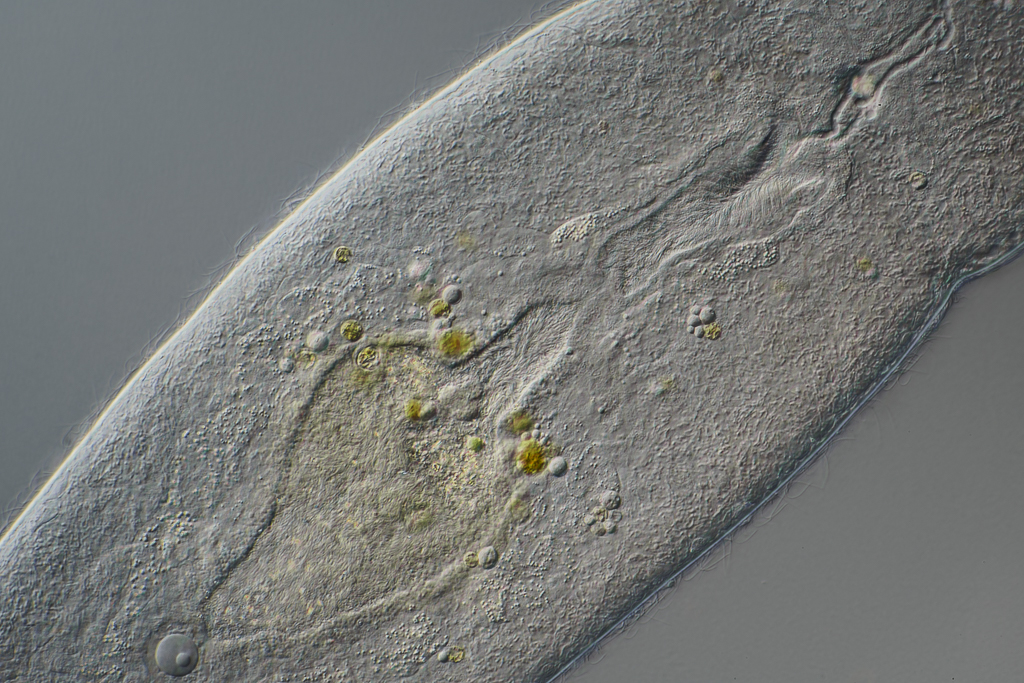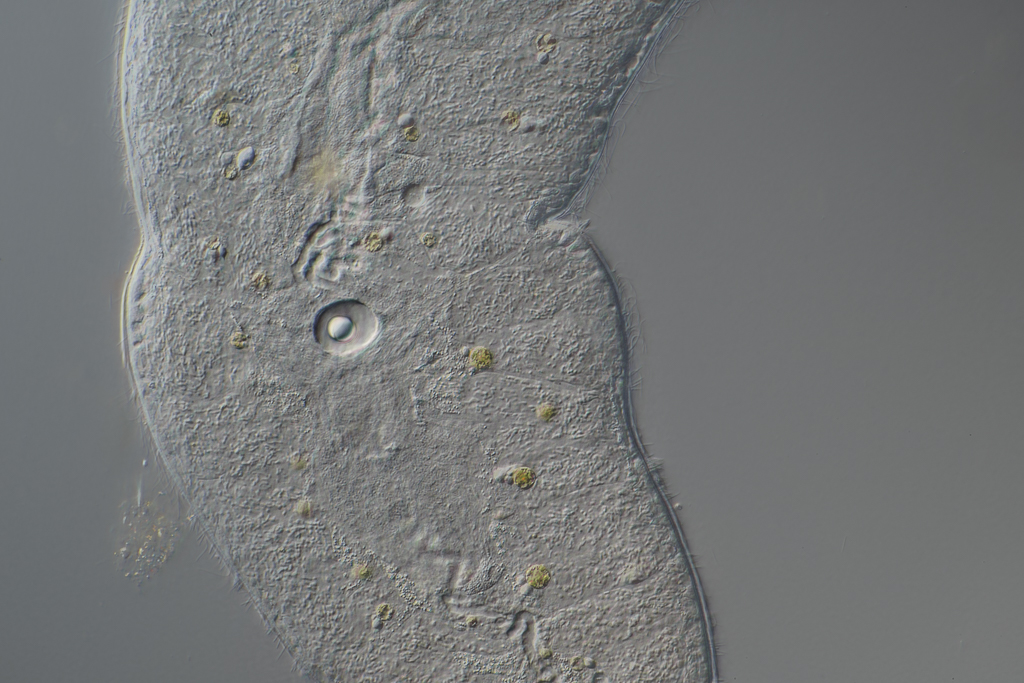20x DIC

40x DIC

again at 40x. There were several of these vacuole-looking things. I found an article that labelled it as 'st' but didn't define 'st'. Another paper on flatworms defines 'st' as stachel, but the definition of that is a nail-like prick which doesn't seem like this structure.

